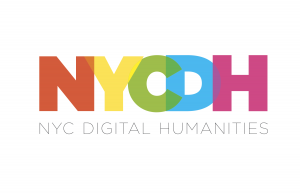Meet like-minded individuals, collaborate, bring your art history questions and learn a tool. There will be four stations where participants have the opportunity to learn CartoDB, Cytoscape, D3.js and bibliographic tools such as Zotero.
Specialists will be on hand to address your questions and to discuss your projects. Please bring your own technology and if you’re interested in learning one of these tools sign up for an account and/or download the software before attending.
CartoDB: Create interactive, map-based data visualizations that you can integrate easily into digital humanities projects. CartoDB has free accounts and is open source.
Andy Eschbacher, Map Scientist, CartoDB
Stuart Lynn, Map Scientist, CartoDB
Sign up for a free account at https://cartodb.com/.
Mapping Resources: https://gist.github.com/auremoser/e7603d70406fe5956a62
Cytoscape: Learn to visualize relationships between artists, patrons, dealers and institutions using datasets and Cytoscape, an open source network visualization platform.
Titia Hulst, Adjunct Professor, Art History, Purchase College
Download the software at http://www.cytoscape.org/ .
D3.js: D3 is short for ‘Data Driven Documents’. It’s a free an open source JavaScript library that can be a powerful tool for rendering art historical data. Projects to be discussed:
Mapping Video Art; Mapping Institute of Fine Arts Alumni.
Jason Varone, Artist; Web & Electronic Media Manager, Institute of Fine Arts, NYU
Download the source code at http://d3js.org/.
Bibliographic: Create bibliographies with groups in real time and use plug-ins to visualize your lists with a click of a button.
Ralph Baylor, Assistant Librarian for Public Services, Frick Art Reference Library
Download the software and sign up for your account at: https://www.zotero.org/
Install Paper-Machines Plug-in at: http://papermachines.org/
(Can assist with installation on-site)


